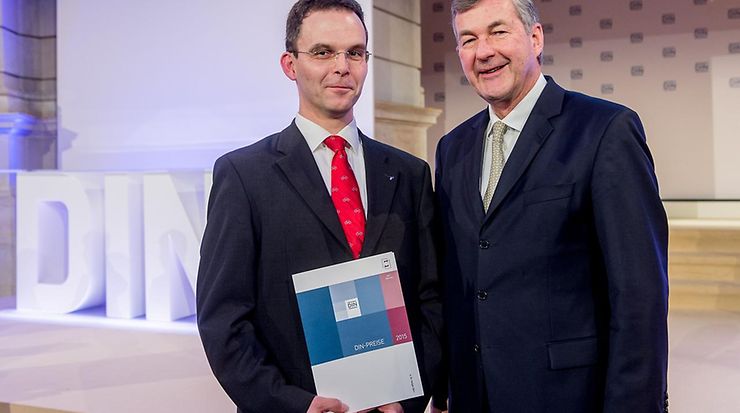DIN Standards Committee Heating and Ventilation Technology and their Safety
DVGW Research Institute awarded DIN “Best Practice” prize

Berlin, 16 November 2015. To demonstrate the benefits of standardization using examples from science, research and practice: this is the purpose of DIN prizes. This year they were presented to the winners at the “Weltfaktor Normung” (Standardization: A global factor) awards ceremony held at Berlin's Museum for Communication. The ceremony was attended by around 300 guests.
The “Best Practice” prize, worth €5,000, was awarded to Dr. Holger Dörr of the DVGW Research Institute, test laboratory gas, at the Engler-Bunte-Institute of the Karlsruhe Institute of Technology (KIT) for his entry on the current standard DIN EN 16340 “Safety and control devices for burners and appliances burning gaseous or liquid fuels — Combustion product sensing devices”.
The use of this standard has a positive effect on the entire appliance sector for burners for gaseous or liquid fuels. The standard also brings numerous advantages for the consumer and helps protect the environment. In his entry on DIN EN 16340, Dr. Dörr highlighted several parameters concomitant with the application of this standard: these include reduced sensor development costs thanks to standardized specifications in the European standard, re?equipment potential for existing plants, amortization based on reduced fuel consumption, increased process stability, longer maintenance intervals and a decrease in emissions. In total, the application of DIN EN 16340 provides sustainable benefits for better safety, efficiency, profitability, and reduced emissions. Both manufacturers and consumers stand to gain.
The aim of the DIN’s “Best Practice” prize is to raise awareness among a wider public by showing examples of the use of standards and the implementation of management and service standards.